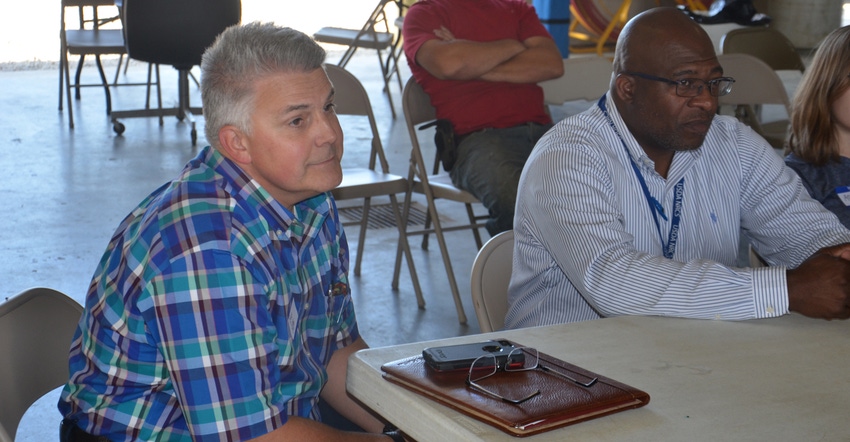August 12, 2019

Have you ever heard the saying “You don’t know what you have until you lose it?” One thing Indiana has is a super-strong partnership for soil and water conservation which extends through local, state and federal levels. Fortunately, Indiana doesn’t have to give up this kind of partnership for you to know just how strong and important it is.
Farmers from four other states visiting Indiana for field days recently gathered for a roundtable discussion about no-till, soil health and cover crops at Roger and Nick Wenning’s farm near Greensburg. When the subject turned to getting the message out to farmers who haven’t tried these practices yet, the farmers from other states made it clear they saw Indiana as a leader.
Why? Primarily because they perceived there is a strong partnership in Indiana when it comes to conservation. Everyone is on the same page, singing from the same hymnal. Based on anecdotal evidence from these visiting farmers, it’s not like that everywhere.
Why it works
Bruce Kettler heads up the Indiana State Department of Agriculture, which includes the Division of Soil Conservation. Jerry Raynor is the state conservationist with the National Resources Conservation Service. They sat side by side during the discussion. That alone would be a rare sight elsewhere, the visiting farmers concurred.
Strong partnerships don’t just happen; they take effort on everyone’s part, from the bottom up and top down. In Indiana, state resource conservationists work side by side with local district employees and federal NRCS personnel on technical work teams.
“We just want to get the job done,” Kettler says. “It doesn’t matter who gets credit. The goal is helping farmers do the best job they can. Everyone pitches in, no matter who is signing their paycheck.
“When I took this position some 18 months ago, it was obvious there was a strong partnership in promoting and carrying out conservation work in this state. I wasn’t about to be the one who messed that up!”
Raynor, who took the reins of Indiana NRCS about 15 months ago, agrees. “We’re all about getting conservation on the land,” he says. “Our people work with farmers and personnel from other agencies to get that done. It’s the job that matters.”
The partnership isn’t just between ISDA and NRCS, both insist. It includes local soil and water conservation districts, the state association of SWCDs, the Indiana State Soil Conservation Board, Purdue University Extension, the Conservation Cropping System Initiative and many more players.
Lisa Holscher heads up CCSI. “Recently we’ve made an effort to expand the partnership even farther,” she says. “We’re inviting personnel from groups like the Indiana Department of Environmental Management and Indiana Department of Natural Resources to field days and meetings. We need to have as many people as possible supporting soil health and conservation.”
All agree that the key partner is you, the farmer. You’re the one who makes the key decisions, accepts the help and puts conservation into practice. Let’s hope cooperating and partnering continue to be Hoosier traditions for a long time to come.
Comments? Email [email protected].
You May Also Like




